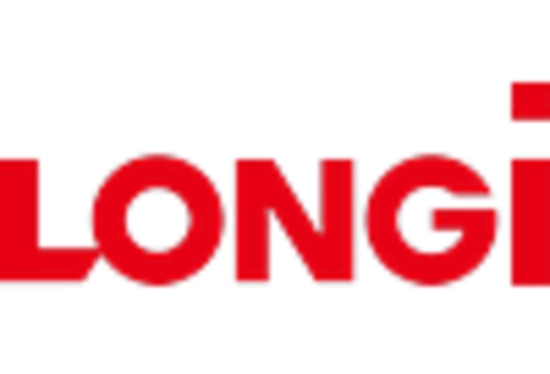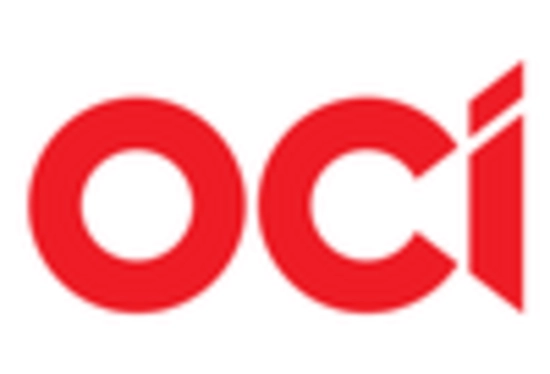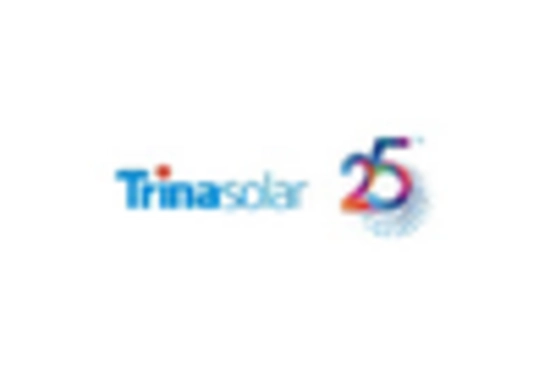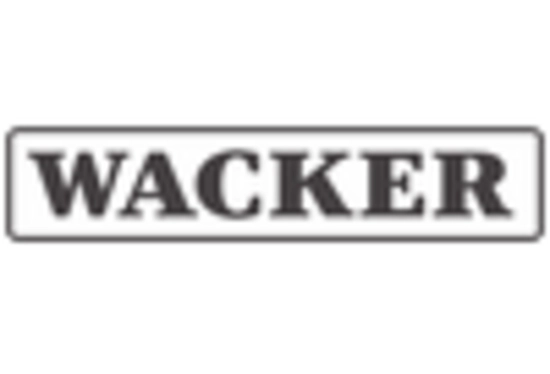Rising Environmental Awareness
The increasing awareness of environmental issues is a crucial driver for the Polycrystalline Silicon Market. As consumers and businesses become more conscious of their carbon footprints, there is a growing preference for renewable energy sources, particularly solar power. This shift is reflected in the rising investments in solar energy projects, which predominantly utilize polycrystalline silicon. In 2025, the emphasis on sustainability is expected to intensify, with more stakeholders advocating for cleaner energy solutions. This heightened environmental consciousness is likely to translate into increased demand for solar panels, thereby propelling the growth of the Polycrystalline Silicon Market. The alignment of consumer values with sustainable practices is anticipated to create a favorable landscape for polycrystalline silicon adoption.
Government Policies and Incentives
Government policies and incentives aimed at promoting renewable energy are pivotal drivers for the Polycrystalline Silicon Market. Many countries have implemented favorable regulations, tax credits, and subsidies to encourage the installation of solar energy systems. These initiatives not only enhance the economic viability of solar projects but also stimulate investments in the polycrystalline silicon sector. In 2025, it is anticipated that such policies will continue to evolve, creating a more conducive environment for the growth of solar energy. As a result, the demand for polycrystalline silicon, a key component in solar panels, is expected to rise, thereby bolstering the Polycrystalline Silicon Market. The alignment of governmental objectives with renewable energy goals is likely to sustain this momentum.
Increasing Adoption of Solar Energy
The rising adoption of solar energy systems is a primary driver for the Polycrystalline Silicon Market. As nations strive to meet renewable energy targets, the demand for solar panels, which predominantly utilize polycrystalline silicon, is surging. In 2025, the solar energy sector is projected to account for a substantial share of the energy mix, with polycrystalline silicon being a preferred material due to its cost-effectiveness and efficiency. This trend is further supported by government incentives and subsidies aimed at promoting renewable energy sources. Consequently, the Polycrystalline Silicon Market is likely to experience robust growth as more residential and commercial installations of solar panels emerge, reflecting a shift towards sustainable energy solutions.
Growing Demand from Emerging Markets
Emerging markets are increasingly contributing to the demand for polycrystalline silicon, thereby driving the Polycrystalline Silicon Market. Countries in Asia, Africa, and Latin America are witnessing rapid urbanization and industrialization, leading to a surge in energy consumption. As these regions seek sustainable energy solutions, the adoption of solar power is becoming more prevalent. In 2025, it is projected that emerging markets will account for a significant portion of new solar installations, further increasing the demand for polycrystalline silicon. This trend is indicative of a broader shift towards renewable energy sources, as these markets aim to reduce their carbon footprints and enhance energy security. The Polycrystalline Silicon Market is likely to benefit from this growing interest in solar technologies.
Technological Innovations in Manufacturing
Technological advancements in the manufacturing processes of polycrystalline silicon are significantly influencing the Polycrystalline Silicon Market. Innovations such as improved purification techniques and enhanced crystallization methods are leading to higher efficiency and lower production costs. For instance, the introduction of advanced Czochralski and casting methods has resulted in higher yield rates and better quality silicon. As manufacturers adopt these technologies, the overall supply chain becomes more efficient, potentially lowering prices for end consumers. This could lead to increased adoption of solar technologies, further propelling the growth of the Polycrystalline Silicon Market. The continuous evolution of manufacturing technologies is expected to play a crucial role in meeting the escalating demand for solar energy solutions.
















Leave a Comment